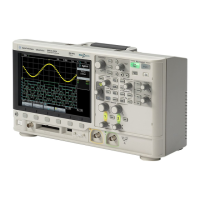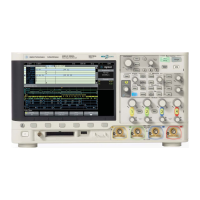384 Agilent X-Series Signal Generators User’s Guide
Troubleshooting
RF Output
Signal Loss While Working with a Mixer
CAUTION To avoid damaging or degrading the performance of the signal generator, do not exceed
33 dBm (2W) maximum of reverse power levels at the RF input. See also Tips for
Preventing Signal Generator Damage on www.agilent.com.
To fix signal loss at the signal generator’s RF output during low–amplitude coupled operation with a
mixer, add attenuation and increase the RF output amplitude.
The figure at right shows a
configuration in which the
signal generator provides a
low amplitude signal to a
mixer.
The internally leveled signal
generator RF output (and ALC
level) is −8 dBm. The mixer is
driven with an LO of +10 dBm
and has an LO–to–RF
isolation of 15 dB. The
resulting −5 dBm LO
feedthrough enters the signal
generator’s RF output
connector and arrives at the
internal detector.
Depending on frequency, it is
possible for most of this LO
feedthrough energy to enter the detector. Because the detector responds to its total input power
regardless of frequency, this excess energy causes the ALC to reduce the RF output. In this example,
the reverse power across the detector is actually greater than the ALC level, which can result in loss
of signal at the RF output.
Mixer
LO
ALC Level
= −8 dBm
RF Level
Control
Signal Generator
Output Control
Detector
measures
−8 dBm
ALC level
Detector
measures
−5 dBm
reverse
power
LO Feedthru
= −5 dBm
RF Output
= −8 dBm
LO Level
= +10 dBm
IF
Effects of Reverse Power on ALC

